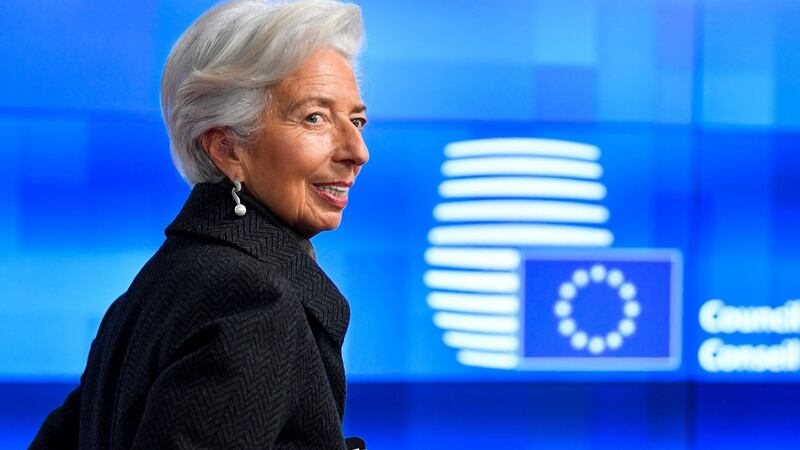While European Central Bank (ECB) president Christine Lagarde continues to whistle past the graveyard of inflation, Jay Powell at the US Federal Reserve is preparing to strap on the central banker equivalent of a Ghostbusters proton pack.
Powell all but confirmed in a press conference on Wednesday that a US interest rate hike is on the way in March – the first since cutting rates to near zero when Covid-19 broke out. And he refused to rule out back-to-back increases thereafter as the Fed seeks to zap runaway inflation, which is currently tracking at 7 per cent – the most since the early 1980s, and 3½ times its target.
Powell's decidedly hawkish tone, as he scrambles to restore the Fed's credibility after consistently underestimating inflation over the past year, served to further stoke volatility across global stock and bond markets. It was a week when investors had already been rattled by heightened fears of a Russian military conflict on Ukraine.
Prices
A jump in Brent crude oil prices to above $90 (€80.65) a barrel for the first time since 2014 (extending their 12-month gains to more than 60 per cent) amid concerns the geopolitical tension will hit global black gold supplies, has only served to add to the pressure on Powell.

International Monetary Fund (IMF) officials warned this week that the escalating conflict would likely lead to headline inflation remaining higher for longer, as it pushes up energy costs and commodities prices internationally.
By early Wall Street trading on Friday, the S&P 500 had fallen over 10 per cent from a record close at the start of the month – putting it in what is known as “market correction” territory. (The market staged a tentative rally as the Friday session went on.) The US market heavily influences global equities. Meanwhile, the MSCI All World Index, a gauge of the global market, has declined by more than 7 per cent.
Some Wall Street types have been saying in recent days that Powell, mindful of the “Red October” global stock market slump fuelled in late 2018 by his comments that rates were “a long way from neutral” at the time, may be forced to make a step back to a more dovish stance if the current market rout continues.
But while the S&P 500’s 100 per cent-plus surge from its pandemic nadir of March 2020 to its recent record highs was fuelled by central banks pumping trillions of dollars into the financial system, the Fed’s dual goals are to ensure price stability and a pursue maximum employment. It doesn’t have a third mandate to offer stock investors a sustained and powerful rally.
Weakness
Where things go from here is uncertain. Stock market analysts in finance houses such as Goldman Sachs, Citigroup and Wells Fargo came out in force during the week to advise clients to buy on the dip, as the global economy continues to grow.
"Any further significant weakness at the index level should be seen as a buying opportunity, in our view," Goldman strategists led by Peter Oppenheimer said on Wednesday.
However, Barclays’s head of US equity strategy Maneesh Deshpande said even before Powell spoke that the S&P 500 faces risks of falling as much as 20 per cent – putting in on the region of bear market territory.
Closer to home, Bank of America analysts said on Friday that European stocks are at risk of extending their 5 per cent fall-back from their early-January highs.
“We remain negative on European equities, with our macro assumptions implying 8 per cent further downside for the Stoxx 600 to 430 by year-end,” they said, referring to the pan-European stocks benchmark.
The Bank of America strategists, led by Sebastian Raedler, said that while the market is pricing fewer than seven Fed rate hikes over the coming three years, it expects at least nine hikes.

Data
They see risks to euro-area economic data as a result of the Russia-Ukraine standoff and reckon that earnings across European public-limited companies have peaked, following a rebound of more than 50 per cent from their mid-2020 low.
They forecast that average earnings per share (EPS) are set to fall by 5 per cent over the course of this year on the back of slowing global growth and increased profit margin pressures, due to rising raw material and labour costs.
The pace of the sell-off this week highlights, according to some observers, how much the global equities rally since March 2020 has been driven by central banks flooding the zone with cheap money to stave off a financial crisis during the pandemic.
A lot of the cash has ended up chasing the likes of meme stocks that move up and down at the whim of small-time investors egging each other on in online chatrooms, cryptocurrencies, blank-cheque company initial public offerings (IPOs), and hotly-valued fledgling technology companies.
With Powell preparing to grab the punch bowl, investors will be forced to become more discerning. It’s only a matter of time before some market mirages out there are exposed.















